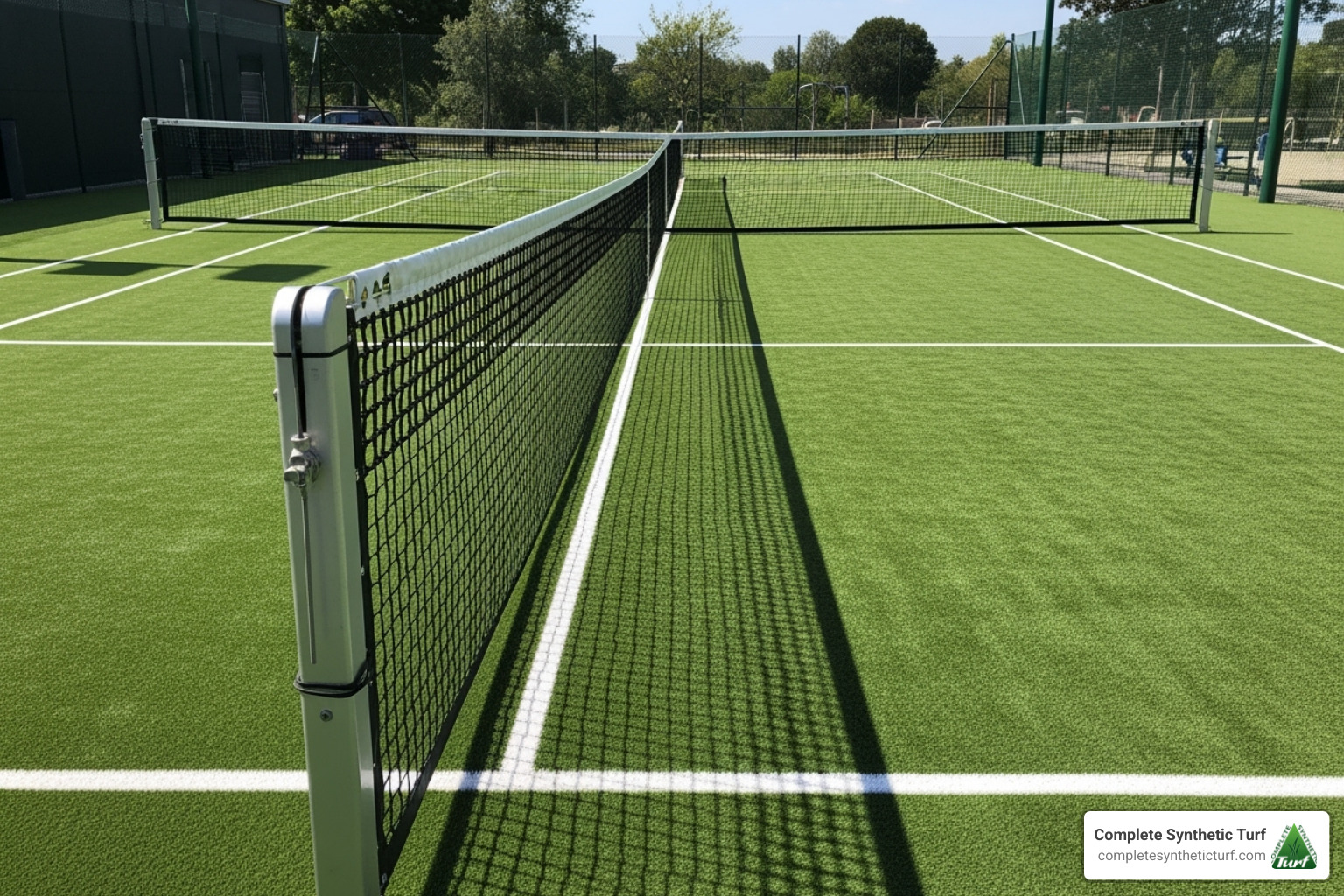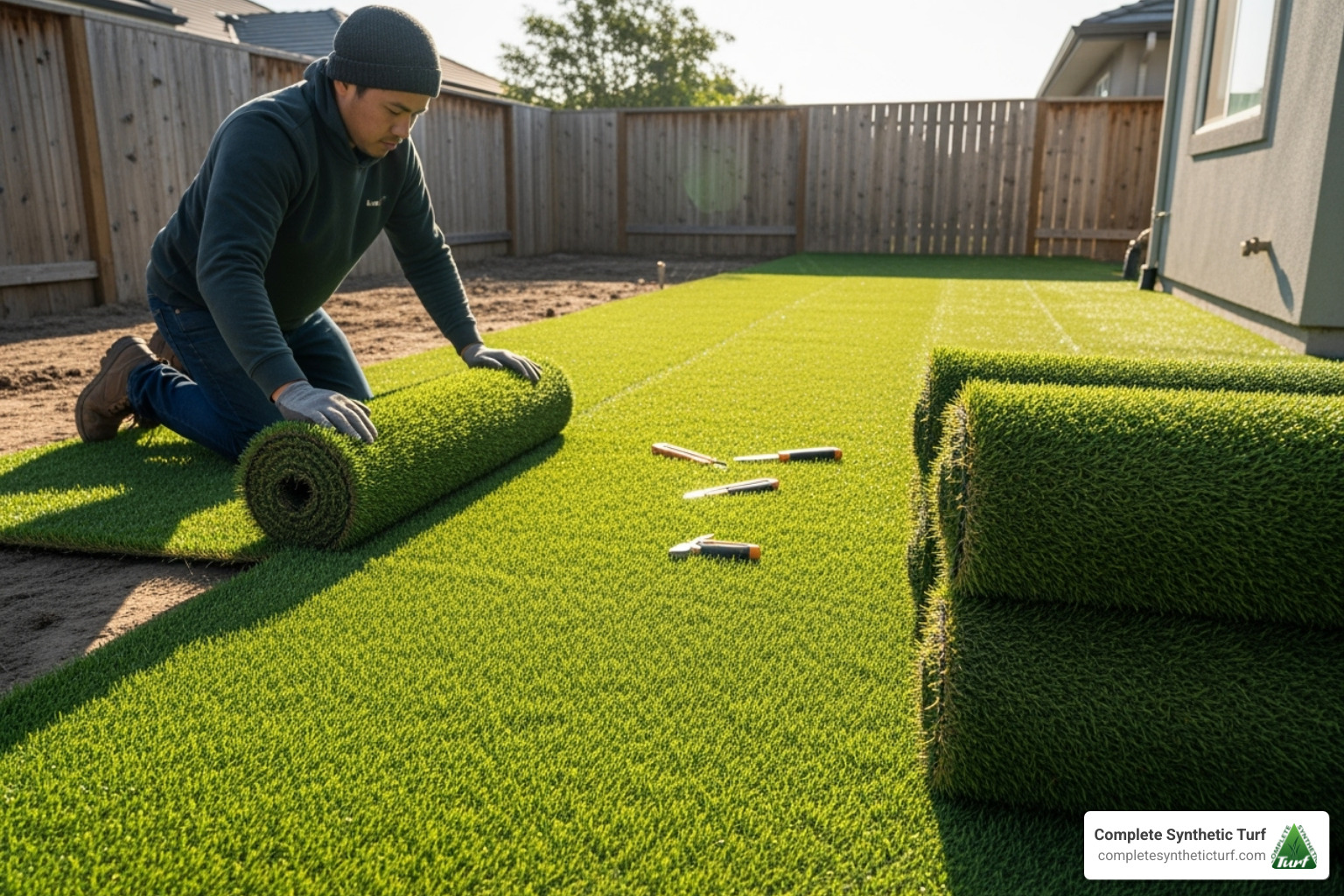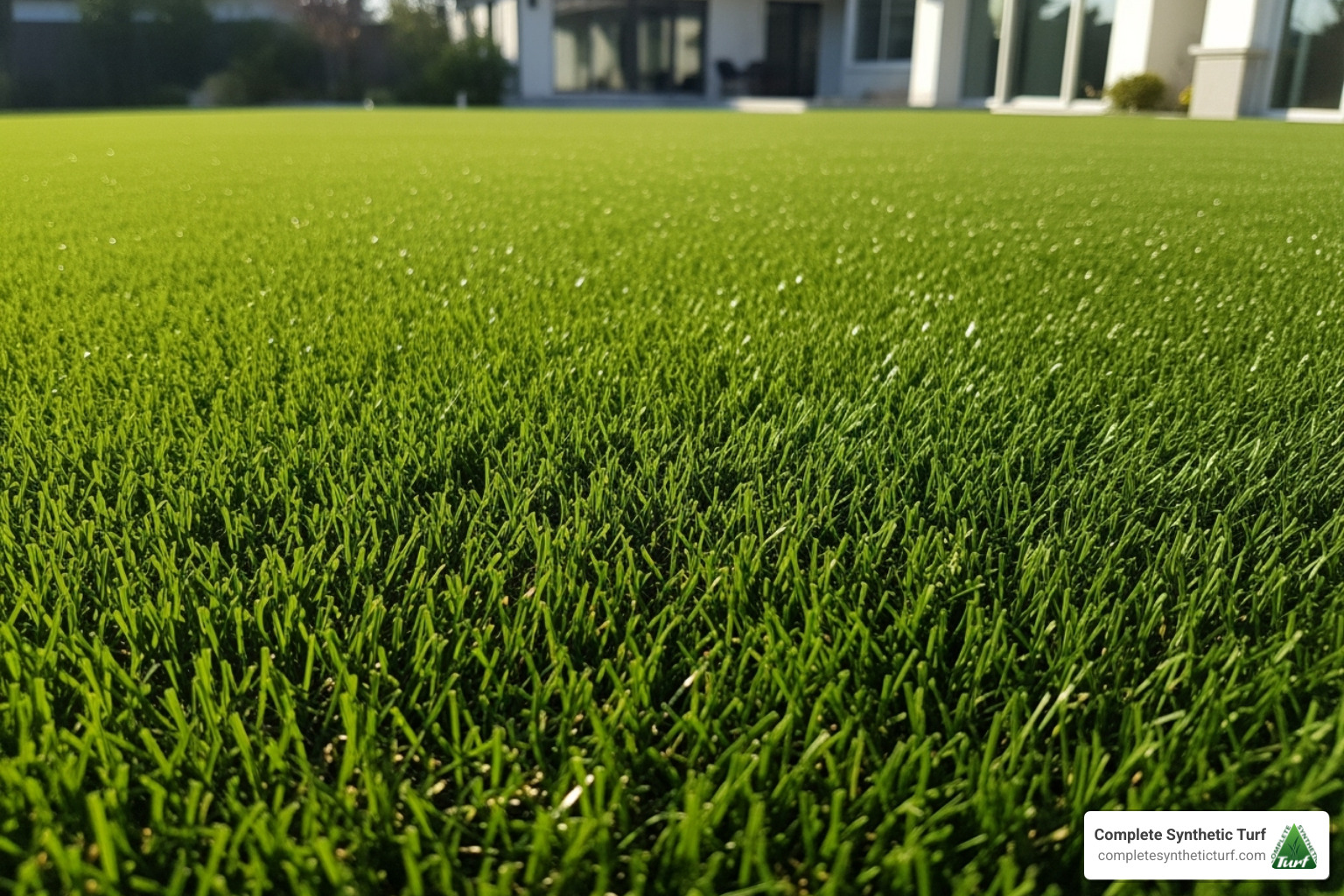
Not only is synthetic turf an upgrade to your personal environment due to it being attractive and easier to maintain, did you know that it’s environmentally friendly, too?
Your carbon footprint is the total amount of greenhouse gases produced directly or indirectly to support human activities – like driving to work or the packaging that your latest Amazon order is shipped in – expressed in the equivalent of tons of carbon dioxide (CO2).
You can reduce your carbon footprint by doing less of those things and as a result, do your part to reduce global warming and support a sustainable environment.
Synthetic Turf vs. Natural Grass
Maintaining a natural grass lawn takes a lot of water to keep it green year round, and the chemicals needed to maintain it also wears on the environment. Add ingas-powered mowers, blowers, and edging and that’s increasing your carbon footprint!
Synthetic turf is a better solution because it doesn’t require water, so you can conserve water and money. You’re also not going to be regularly firing up a mower or other lawn equipment, which also lowers your carbon footprint. Additionally, by using turf, you’re using recycled materials in the way turf is manufactured, as the crumb rubber used for infill in lots of synthetic turf installs is used from recycled tires. You’ll also keep grass clippings from clogging up landfills.
While synthetic turf requires manufacturing, the benefits outweigh the negative when you think about the longevity of your lawn.
Other Ways You Can Reduce Your Carbon Footprint
Use sustainable design elements and plantings in your lawn, or incorporate recycled materials in your hardscaping, such as window frames to create a trellis or recycled pavers, bricks, or stone.
When you’re ready to make the plunge, contact Complete Synthetic Turf to see how our team can help you reduce your carbon footprint with a lawn you’ll enjoy.



